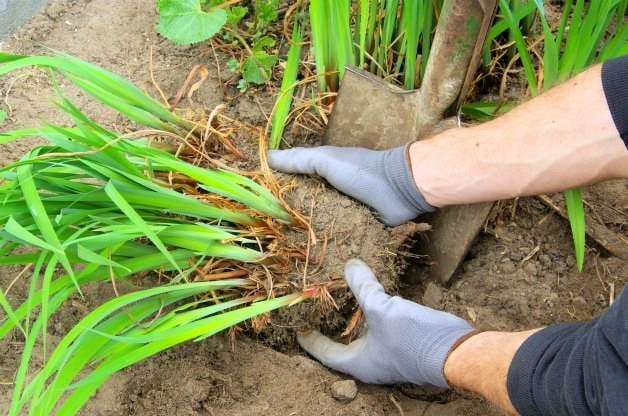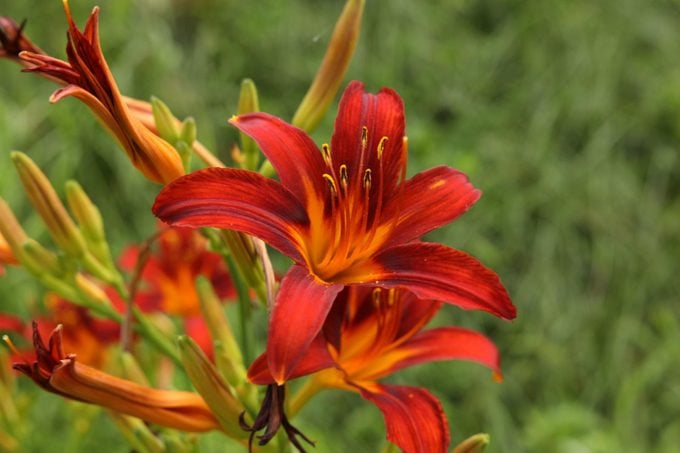Dividing Perennials: How, When and Why You Should Divide Plants
Updated: Sep. 30, 2021
Dividing perennials keeps plants healthy, plus you get more free plants! Learn how and when to dig up and transplant perennial plants.

Only in gardening does division turn into multiplication. We’re talking about dividing perennial plants—digging up clumps of crowded perennials and splitting them into smaller individual plants.
Why You Should Divide Perennials
“Dividing perennials gives you more plants to place in your landscape or to share and swap with friends and neighbors,” says Justin Hancock, horticultural craftsman for Monrovia Nurseries. This a good way to create new plants for yourself or to share with friends. Some fast growers are so productive you may need to toss the surplus in the compost bin.
Of course, that’s not the only benefit of dividing perennial plants. “The biggest value in dividing perennials is that it keeps most plants healthy and looking their best,” Justin says. While not all perennials and grasses need to be divided, the process can help reinvigorate them and encourage them to produce more blooms.
Perennials need regular digging, dividing and transplanting to maintain healthy, attractive growth. When the middle of a plant dies out or looks like a doughnut, or if plants start to flop, fail to bloom or outgrow their location, they need to be divided.
When to Divide Perennials
It’s usually plain to see when they’re ready for a breakup. “The most obvious sign that your plant could use dividing is when you see it start to die in the middle—as it grows, it is literally crowding itself out,” Justin explains. “Other signs may be a decrease in flowering and overall performance. And the clump may be quite large.” Make sure you’re not making these other common mistakes with perennials.
A good starting point is to follow this old saying: “Divide spring bloomers in fall, fall bloomers in spring, and summer bloomers in either fall or spring.” For greatest success, dig up, divide and transplant spring flowering perennials in late summer, fall bloomers in early spring, and those that flower midseason at either of these times. Experienced gardeners find that they can push the limits of dividing perennials plants when time allows. You can generally stretch the transplanting guideline with most perennials as long as you provide proper care afterward.
Water thoroughly and often enough to keep the roots slightly moist. As the new plantings become more established, extend the time between watering. Once they’re settled, care for them as you did before.
Some plants can be split anytime, such as daylilies, but make sure you divide perennials at least a month before the ground freezes. Learn what other garden chores you should be doing in fall.
Learn about plant propagation: How to multiply your plants for free.
How to Divide Perennials
Dig up the plant you’re splitting with a spade or fork on a cool, cloudy day. Lift the plant to remove any loose soil and to tease the roots apart. And separate the plant into smaller divisions, making sure each piece has growing shoots and roots.
For perennials with finer root systems are among the easiest to divide. Plants like yarrow, aster, coreopsis, monarda and sedum are simple enough to split with a spade. Larger ornamental grasses are more tricky. “The bigger or deeper the root system, the more challenging the physical act of dividing can be,” Justin says.
To lessen the stress on the plant, Justin recommends digging holes for the daughter divisions before digging up the mother plant. “That can greatly reduce the amount of time your plant is out of the soil with its roots exposed,” he says. Justin also advises trimming plants to compensate for lost roots. “Roots absorb moisture for the plants, and leaves release moisture as they breathe,” he says. Cut back the foliage to reduce the burden for the roots and to help your new plants establish.
Step 1:
Dig around the outside edge of the entire plant using a garden fork or shovel, and lift the plant out of the ground.
Step 2:
Each plant can be divided into halves, fourths or eighths, depending on its original size and how many divisions you want. Two garden forks or shovels, back to back, are usually sufficient to divide the sometimes stubborn clump of roots.
Step 3:
Amend the planting sites with slow-release nitrogen fertilizer and organic matter. This is one of your only chances to deeply amend the garden soil around perennial plants.
Step 4:
Replant divisions at the same depth they were growing. You may want to put one of the divisions back in the original location. But don’t replant the center of the plant if it’s dried-out or dead. That is better suited for the compost bin. Water thoroughly.

Perennial Plants That Are Easy to Divide
- Ajuga
- Aster
- Astilbe
- Chrysanthemum
- Coreopsis
- Daylily
- Goldenrod
- Hosta
- Leucanthemum
- Monarda
- Rudbeckia
- Sedum
- Siberian Iris
- Yarrow
Next, check out the ultimate gardening tips to be the best plant parent.
